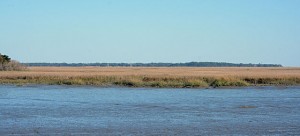Measurements of sea level have shown that sea level in most areas of the world is increasing. This is due to the impacts of warming ocean water, which expands as it gets warmer, plus the additional water added to the oceans by the melting of glaciers and ice sheets in Greenland and Antarctica. The impacts of sea level are being studied with some concern by city planners near the coast, ecologists worried about the health of estuaries along the coast, and even the military, particularly the US Navy, which has many facilities located along the shore.
The World Resources Institute posted an article this week which described some of the increases in nuisance flooding that are occurring along the US coast. The Southeast saw a lot of nuisance flooding along the coast in early October with the extremely high tides caused by the Supermoon as well as the onshore flow of wind around Hurricane Joaquin. In fact, UGA has a study currently running which is identifying the inundation caused by the recent high tides using a smartphone app to map areas of flooding more precisely than in the past. You can read a story about it at Savannah Now.
NASA released a video earlier this year which shows the change in sea level over time. You can read that story and access the video at Yahoo News here. The Washington Post has a good article explaining why NASA is so concerned about it here.
The impact of rising sea levels on marshes is not well known, but are expected to be significant. Changes in salinity, water flow and inundation of marshlands are all expected to bring big and potentially catastrophic changes to the marshes along our coasts. The Florida Times Union has a good article about the impacts of the rising seas on marshes here.
